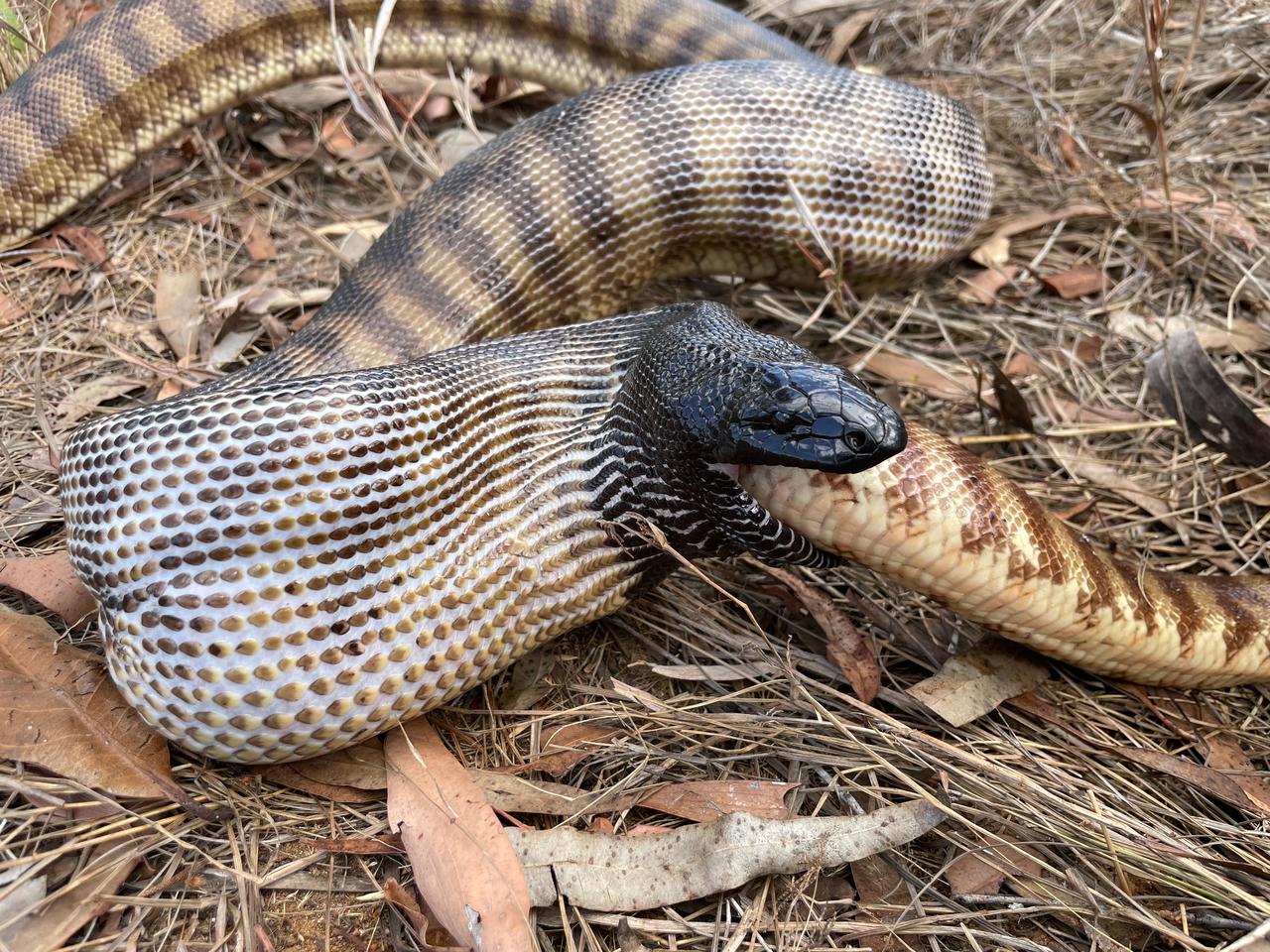While we all know it’s a dog-eat-dog world, so to speak, an Australian snake species has taken the suggestion of cannibalism very literally and has been captured consuming a smaller, and very unlucky, version of itself.
In a rare moment caught on film, Nick Stock, manager at Australian Wildlife Conservancy’s (AWC) Piccaninny Plains Wildlife Sanctuary in Far North Queensland, photographed a large black-headed python enjoying a sizeable meal of another black-headed python. Despite the python’s usual behaviors of constricting prey fatally before eating, this smaller snake was indeed consumed while it was still alive.
Sadly for one of these animals, this is nonetheless a natural aspect of their behavior.
“Fortunately for me but not-so-fortunately for the python being consumed, it took around 15 minutes from when I first witnessed the initial constriction to the python finishing its meal and returning to its burrow which was only about 10 feet away,” Stock said. “This gave me plenty of time to get a camera and document the event.”
Unlike many snakes that seek out mammals, the non-venomous, constricting python (Aspidites melanocephalus) is known to eat from the reptiles menu more often, and opportunistic cannibalism has been reported before. As in this case, immature pythons are vulnerable to predation by large adults. However, it’s extremely rare to witness such an event, let alone capture it on camera.
While taboo in the human species, cannibalism in the animal kingdom is widespread and more common than most people think.
“It was a surprise at first, but I feel really fortunate to witness such an event,” said Stock. “I have previously witnessed black-headed pythons eating an Eastern brown snake and a yellow spotted monitor, however, this was the first time I witnessed a black-headed python eating another black-headed python.”

While not dangerous to humans, these pythons have been seen eating large reptiles such as goannas and even taking on (and winning) battles with venomous snakes.
“I’m not surprised that they would consume another python if the opportunity arose,” added Dr. Helena Stokes, AWC Wildlife Ecologist. “By consuming other individuals, they are also reducing competition for resources in the area.”
While this event technically happened ‘in captivity,’ Piccaninny Plains Wildlife Sanctuary actually covers 164,862 hectares (407,383 acres) of remote, diverse bushland in the center of the Cape York Peninsula and is an important area for conservation projects, biodiversity studies and other wildlife research.
Source: Australian Wildlife Conservancy
Source of Article